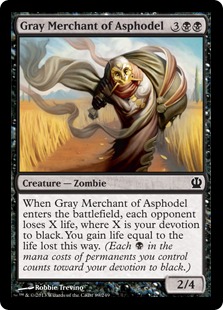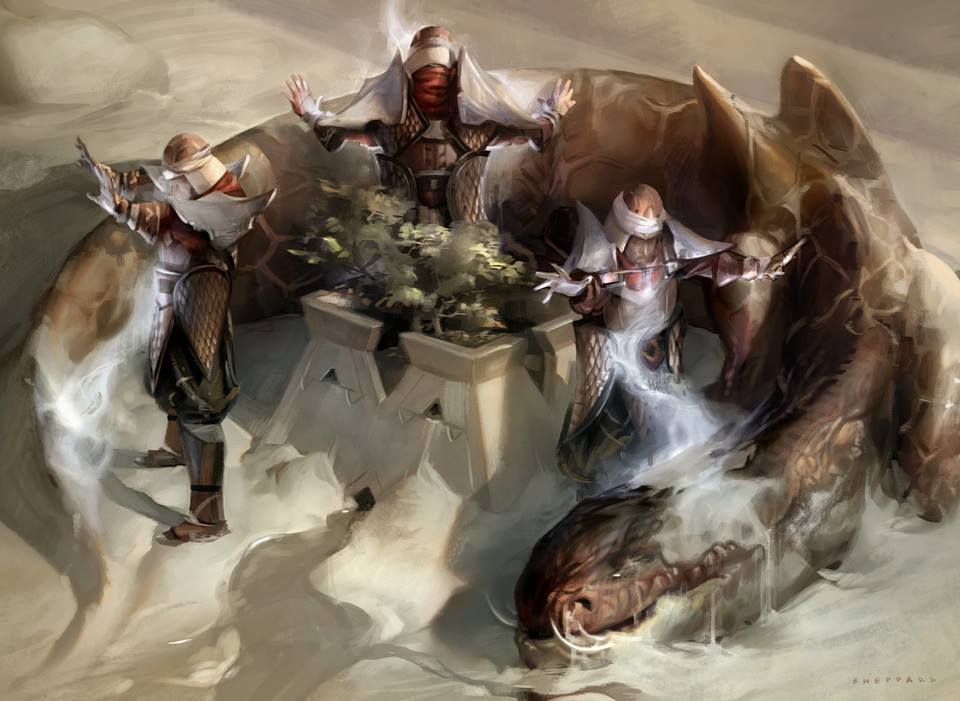One of the hottest games from GenCon 2014 was
Imperial Settlers
, a card management game by Portal Games. In this game, you take on the role of one of four powers who are in a race to settle new lands and take advantage of new resources and opportunities. You play as one of four civilizations - Romans, Barbarians, Egyptians, and Japanese - each share a common deck of cards while also having their own separate deck with mechanics and themes unique to that culture. Over the course of five rounds, you explore new lands, build new structures, trade resources, and conquer your enemies. And at the end of five rounds, whomever has amassed the greatest number of victory points wins.
Each round, you take turns drafting cards from a common pile, then produce resources based on your faction and cards you've previously played, and then alternate taking actions until each player has exhausted their options. The mechanics are simple, but there's a good deal of strategic depth, since many cards can be used in multiple ways. You can choose to play it as a "deal" and gain a particular resource each round; you can instead "build" the card for its cost; or you can "raze" the card, discarding it to receive a one-time combination of resources. And in addition to resources like food, stone, wood, gold, and colonists, you also produce swords, which allow you to attack your opponent and "raze" his buildings instead.
The factions are noticeably different from one another. The Barbarians are themed around producing a lot of colonists and converting them into whatever resources you need. The Romans are themed around building a variety of civic structures. The Egyptians focus on acquiring gold, and the Japanese focus on protecting their empire with samurai while having the option of razing their own buildings for quick resources. The Barbarians are probably the easiest to play, while the Egyptians are arguably the most difficult.
The production values of the game are quite good. The card art is evocative and beautifully rendered, and the wooden "meeples" and resources are solid and clearly distinguishable by color and shape. The game comes with a faction board for each civilization, with clear reminders about your options each turn and a clever way to organize the different types of cards you play throughout the game. These faction boards also have an identical male and female side, which I thought was a nice touch. You also get a gorgeous, full-color rulebook that clearly and succinctly takes you through the game. And if you want to skip the rulebook entirely, it also links you via QRCode to a video tutorial to learn the game that way.
Finally, there is also an "attack" deck of cards that allows you play the game single player. The gameplay is very similar to the regular game, save that the actions of your "dummy" opponent are directed via the special deck. Winning the single player variant is fairly simple, but since you also still keep track of victory points, they include a handy reference guide that ranks your skill based on your total.
Imperial Settlers
is a great game that I recommend highly. It's simple to play and quick to learn, but has a surprising amount of depth and replay value. Mastering all four factions takes quite a bit of gameplay, and even the same faction can play out quite differently from game to game depending on your initial hand of cards and which of the shared deck you end up having access to. The single player variant is also a great way to practice the game, since the tricks you learn there are very applicable to the regular game. If you're looking for a new strategy board game, you should certainly give it a try.










